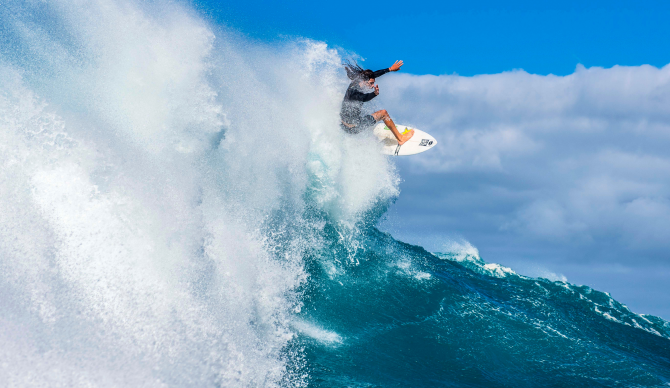
“You see a lot of people who are afraid to commit to the section they get.” -Matt Meola, Inspire Courses
Editor’s Note: Learn to land your first air or take your air game to new heights. Sign up for Matt Meola’s Guide to Aerial Surfing on Inspire Courses to access a lifetime of innovation above the lip. Matt Meola’s Guide to Aerial Surfing is supported by Rockstar Energy.
Aerial surfing isn’t something that just sprouts from natural talent. It requires repetition and a lot of trial and error, according to Inspire Courses instructor Matt Meola. Setting out equipped with some knowledge helps too, as plenty of surfers tend to repeat a series of the same mistakes and can find their groove with a handful of basic tips. In Meola’s eyes, there are precisely three things a surfer must approach each wave with in order to get better and better in their above-the-lip endeavors.
1. Choose the right wave.
2. Decipher what the section is good for (what type of air is the section good for committing to).
3. Commit to the landing.
Each of the above are things Meola sees a lot of surfers not doing, and it slows their progression. The result is attempting the wrong maneuver for the wave and a hesitant approach to both the air and the landing.
“These are huge issues I see when I watch people who are learning to do airs,” Matt tells The Inertia in his new course, Matt Meola’s Guide to Aerial Surfing. “Right before they hit it, they don’t have confidence in themselves and they’re afraid.”
As a rule of thumb, Meola advises a “land everything” mindset. While you will inevitably fall often, committing to each individual air from start to finish will help in the long run, he says.
“Start stomping things and it’s just going to get you more comfortable on your surfboard,” he says. “It’s just like the number one thing you don’t want to do is not commit. That’s huge. It’s a huge issue.”
Other technical factors will start to present themselves once your comfort and confidence grow, like analyzing wind conditions and using them to your advantage. The intricacies of your mechanics and depth of knowledge will send you down a rabbit hole of fine-tuning techniques from there.
“There are all types of little tricks you can do once you’re in the air to help with these things,” he adds. “So, when we start moving through certain maneuvers, I can talk to you about where you want to be looking, where you want to grab your board, and what you want to do in the air. That’s all going to help you do what you want to do.”

